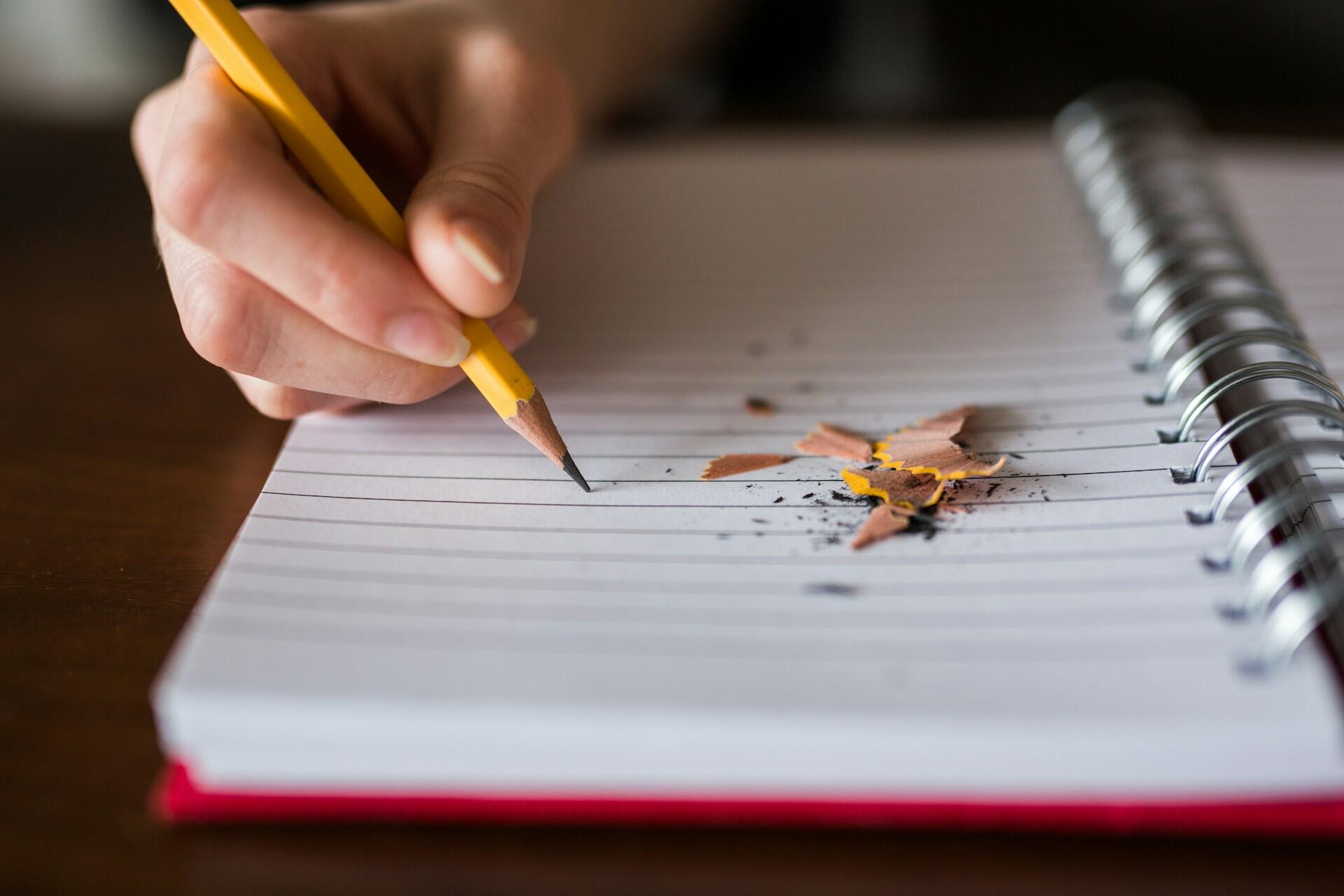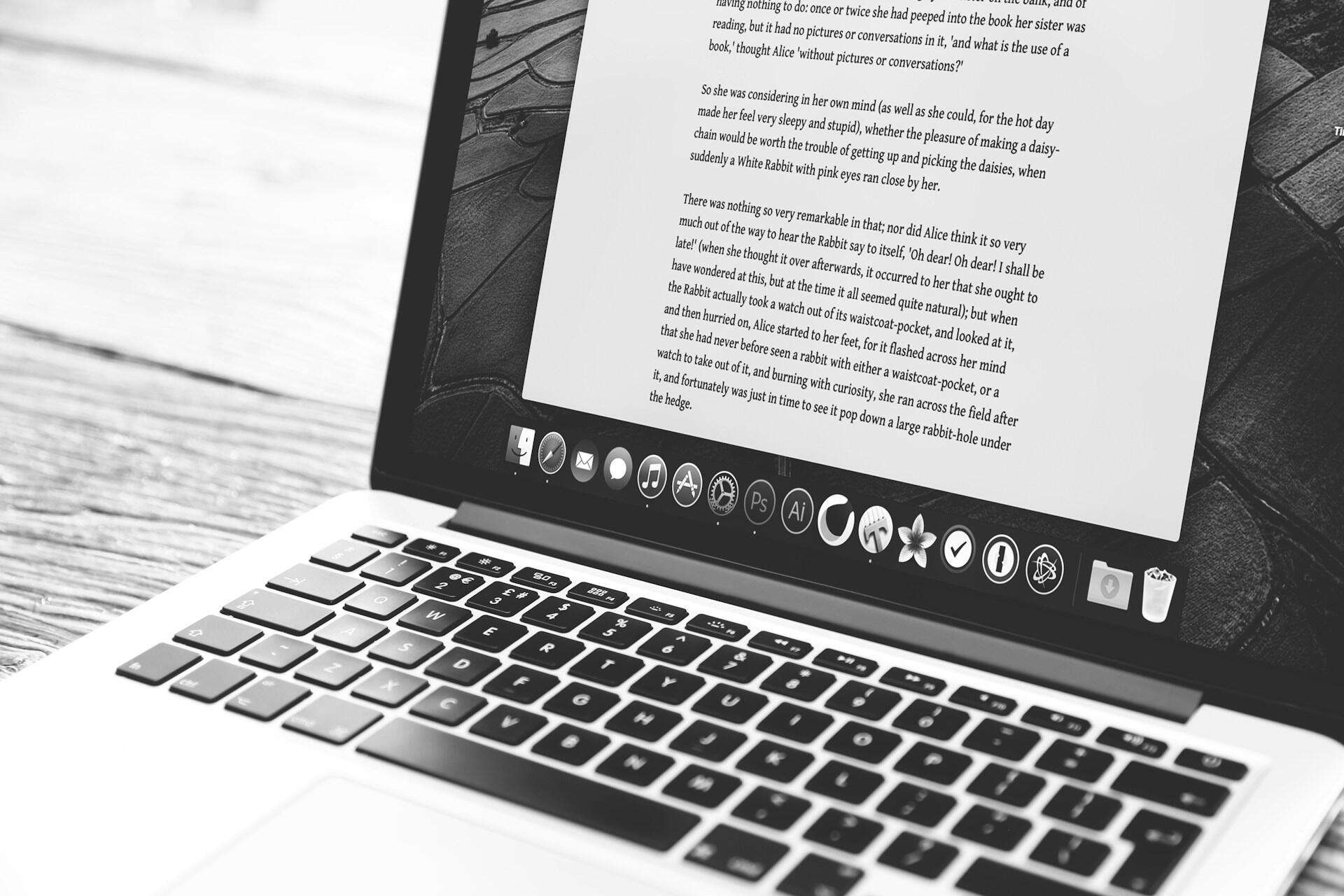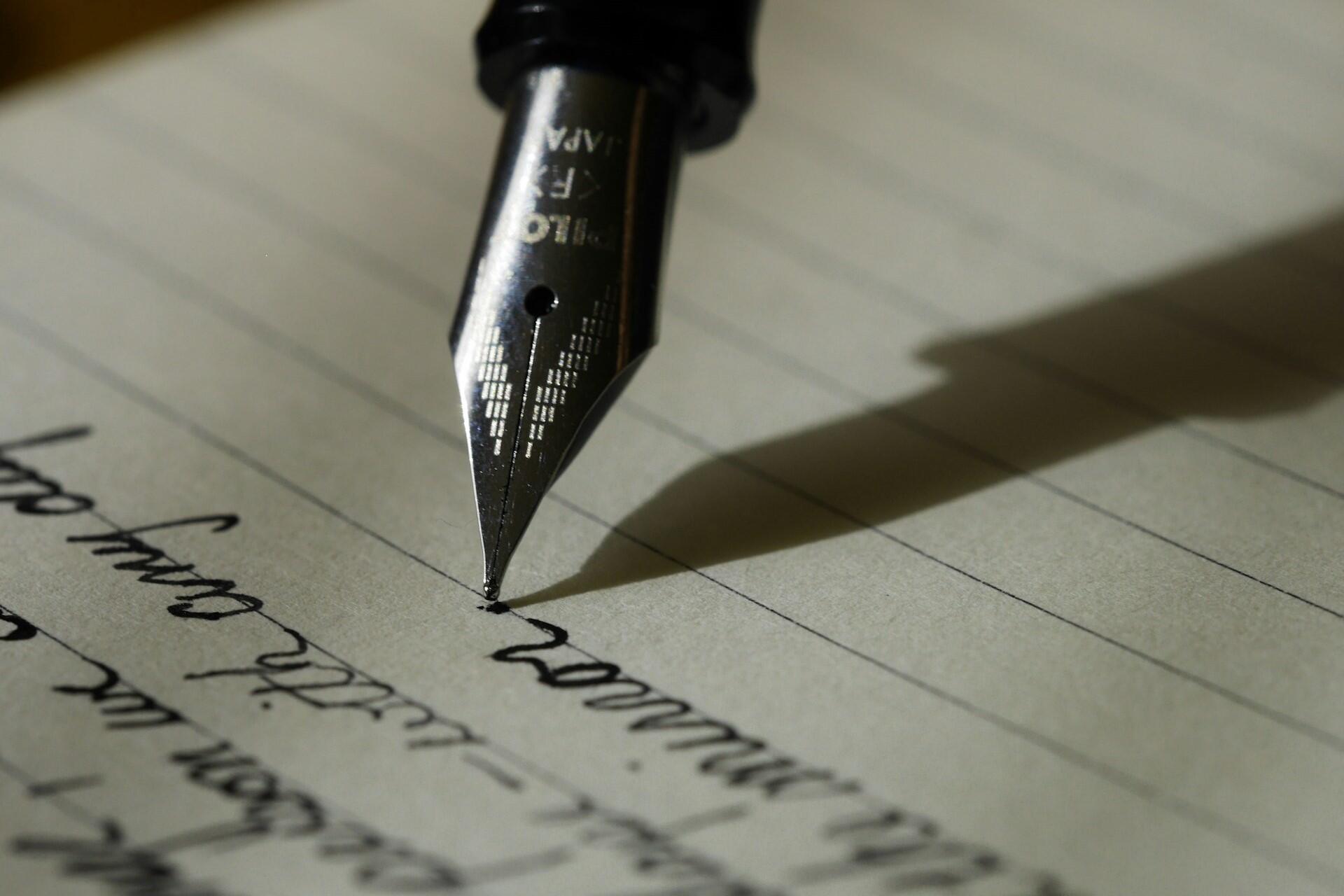Language features are the techniques that writers use to create meaning, add depth, and engage readers. Whether studying English for school, working on creative writing, or revising, understanding these features will help you analyse texts better and improve your writing skills.
Writers do more than choose their words and phrases; they use language features like metaphors, personification, alliteration, and rhetorical questions to give text power.
Here, we'll explore the most important language features, provide examples, and help you understand and use these language features yourself.

Figurative Language
Figurative language includes a set of techniques that writers use to create vivid images and deeper meaning in texts.
Rather than describing things literally as they are, figurative language gives readers a fresh perspective on ideas and emotions, which makes writing more interesting and memorable.
Figurative language is common in narrative, poetry, and persuasive texts, but you can use it in all English writing and recognising it and other literary devices will help you to improve your English coursework.
Metaphor
Metaphor is when something is described as if it were something else.
Example: "Time is a thief that steals our moments."
This feature makes readers think about time differently, showing how quickly life can pass by. Metaphors create strong emotional responses and help the reader connect abstract ideas to everyday experiences.
Simile
A smile is when you compare one thing to another using “like” or “as.
Example: "Her smile was as bright as the sun."
This technique helps readers picture the character's smile and understand its emotional impact.
Personification
Personification gives human qualities to non-human things like objects, animals, or ideas.
Example: "The wind whispered through the trees."
This feature brings the natural world to life, making the writing more vivid and engaging for the reader. Personification can also add emotion or mood to a story.

Hyperbole
Hyperbole is when you exaggerate for increased emphasis or effect. It's even better if you choose the right words.
Example: "I’ve told you a million times!"
Hyperbole can be humorous or serious, but it always draws attention to a key idea or feeling, making the reader focus on its importance.
Symbolism
Symbolism is when a writer uses an object, word, image, or idea to represent a bigger or more significant idea or concept.
Example: A storm might symbolise conflict or change.
This technique adds deeper layers of meaning to a text, encouraging readers to think beyond the surface story.
Allusion
Allusion is when a writer refers to another famous text, person, event, or cultural product.
Example: "He was a real Romeo with the ladies." (refers to Shakespeare’s character).
Allusions connect the writing to other well-known stories or ideas, adding richness and encouraging readers to draw connections.
Figurative language includes words and phrases that go beyond their usual meaning to make writing more interesting and impactful. Writers use these features to paint pictures in the reader's mind, add emotional weight, and express complex ideas creatively.
Sound Devices
Sound devices are when writers use how words sound to create effects in a text. After all, words have their semantic meaning and phonological qualities.
Sound techniques can grab readers' attention, add rhythm to writing, or make ideas more memorable.
Sound devices are more often employed in poetry, speeches, and narrative writing, but you can make words come alive in any writing with these sound devices.
Alliteration
Alliteration is when the same consonant sound is repeated at the start of words.
Example: "The wild wind whistled wildly."
Alliteration draws attention to a particular phrase, creates rhythm, and can mimic sounds to make the reader feel more involved in the scene.
Assonance
Assonance is when vowel sounds are repeated within nearby words.
Example: "Hear the mellow wedding bells."
This technique creates a musical quality, adding to the mood and flow of the text, and helps link words and ideas together in the reader’s mind.
Consonance
Consonance is like the consonant version of assonance. This is when consonant sounds are repeated within or at the end of words.
Example: "The lumpy, bumpy road."
Consonance adds rhythm and can emphasise particular ideas or images in the writing.
Onomatopoeia
Onomatopoeia are words that imitate the sound they represent. Examples include "bang," "pop," and even "splash."
Example: "The bees buzzed and the brook gurgled."
Onomatopoeia makes writing more vivid and immersive, helping readers hear what is happening in the story or speech.

Rhyme
A rhyme is when words have the same sound at the end.
Example: "The cat sat on the mat."
Rhyme can make a text more memorable, give it a pleasing sound, and create a sense of unity or completion in a line or sentence.
Rhythm
Rhythm is simply the pattern of stress within words in writing. With words in English having stressed and unstressed syllables, you can use these to create a beat within writing.
Example: "I wandered lonely as a cloud."
Rhythm gives writing a flow and can control how fast or slow a reader experiences the text — adding tension, excitement, or calm depending on its use.
Sound devices are language features that focus on how words sound, not just what they mean. Writers use them to make writing more exciting, rhythmic, and memorable. Look out for repetition, matching sounds, and words that mimic noises in speech and stories!

Structural Techniques
Structural techniques focus on how a text is organised. This creates meaning through things like the story or argument.
Writers can arrange words, phrases, and ideas to affect readers differently. This is more common in narrative, persuasive, and functional texts.
Repetition
Repetition is simply repeating words, phrases, or ideas within a text for emphasis.
Example: "Alone, alone, all alone, alone on a wide, wide sea."
This technique draws attention to a particular feeling or idea, ensuring the reader notices it. Repetition can build tension, highlight key themes, and influence the reader's understanding of a character or situation.
Anaphora
Anaphora is a type of repetition. This is when you use the same word or phrase to start multiple sentences or clauses.
Example: "We will fight for freedom. We will fight for justice. We will fight for peace."
This feature creates rhythm and can inspire or persuade readers, especially in speech and persuasive writing.
Juxtaposition
Juxtaposition is when you highlight the difference between two contrasting ideas by placing them close together in writing.
Example: "It was the best of times, it was the worst of times."
Juxtaposition makes contrasts stand out, helping readers notice conflicting ideas or feelings in a text and deepening their understanding of the writer's message.
Contrast
Contrast is highlighting differences between ideas, characters, or settings within writing.
Example: Describing a dark, stormy night followed by a bright, sunny morning.
Like juxtaposition, contrast emphasises differences to create drama and tension or highlight a theme in the story.
Parallelism
Parallelism (or parallel structure) is repeating a grammatical structure in writing across multiple lines or sentences.
Example: "To strive, to seek, to find, and not to yield."
This feature gives writing a sense of balance and rhythm, making ideas clearer and more powerful to the reader.
Listing
Listing, sometimes called enumeration, is when you present several examples, items, or ideas in a row or list them. It's useful when writing essays, just remember not to overdo it.
Example: "He brought bread, cheese, apples, and wine."
Lists add detail and build a picture for the reader, showing quantity and variety or creating tension depending on context.

Sentence Length
Writers can vary sentence length to control pacing and emphasis. This is a key technique for engaging the reader and affecting their reading experience. Just make sure that your sentences are grammatically correct.
Example of a short sentence: "He stopped."
Example of a long sentence: "Despite the rain, the wind, and the fading light, she continued walking toward the distant hills, never looking back."
Short sentences can create tension, urgency, or shock. Long sentences can slow the pace, build description, and add complexity to an idea. The writer's choice affects how the reader experiences the text.
Structural techniques shape how a text unfolds and how ideas are presented to the reader. They guide readers' attention, create tension, and emphasise essential themes. By noticing how a writer builds their text, you can better understand the meaning and effect of their writing.
Persuasive and Rhetorical Features
Writers can use persuasive and rhetorical features to convince or influence readers.
These features are often used in speeches, articles, advertisements, or opinion pieces. They allow writers to create strong arguments, appeal to emotions, or make readers think about certain ideas in new ways.
Rhetorical Questions
A rhetorical question is a question that's asked more for effect than for an actual answer. Useful, isn't it?
Example: "How could anyone ignore such injustice?"
This feature makes the reader stop and think. It challenges them and encourages agreement with the writer's point of view.
Emotive Language
Writers can use emotive language or words and phrases designed to stir emotions.
Example: "Thousands of innocent lives were destroyed."
This technique makes arguments more powerful and persuasive by appealing to the reader's feelings like anger, sympathy, or hope.
Inclusive and Exclusive Language
Writers can use inclusive language to make readers part of a group or exclusive language to separate people.
Example (Inclusive): "We must stand together to fight climate change."
Example (Exclusive): "They don’t care about our future."
Depending on its use, this feature builds a connection or creates division to strengthen an argument.
Modality (High and Low Modality)
Writers can use words with different certainty and strength to convey confidence or possibility.
Example (High Modality): "We must act now."
Example (Low Modality): "We could try a new approach."
Choosing high or low modality shapes how confident or cautious the writer sounds, influencing how readers react to their ideas.
Anecdotes
An anecdote is a short personal story. Writers can use these to illustrate a point. However, in a lot of academic writing, you'll need to properly cite reference.
Example: "When I was a child, I saw firsthand how poverty affects families."
Anecdotes make arguments more relatable and human, helping readers connect to the text on a personal level.
Statistics and Facts
Statistics and facts can be used to give arguments weight or credibility.
Example: "According to recent studies, 70% of students prefer online learning."
This feature appeals to logic and reason, making arguments harder to dismiss. Readers are more likely to trust writing backed by evidence.
Rhetorical and persuasive techniques make writing more convincing. Writers use them to appeal to emotions, logic, and shared values, helping readers understand and agree with their ideas. Mastering these skills can improve your reading and writing at any level!
Grammatical and Syntactical Features
Writers can shape meaning in texts using grammatical and syntactical features or structuring words and phrases.
Imperative Verbs (Commands)
Imperative verbs are commands, often telling the reader what to do.
Example: "Join us now to make a difference!"
Commands create a sense of urgency and involvement, making the reader feel like they need to act. This feature is often used in persuasive writing, such as speeches and advertisements.
Nominalisation
Nominalisation is when verbs are turned into nouns.
Example: "Decide" becomes "decision."
Sentence Example: "The decision was made to postpone the event."
This feature makes writing sound more formal, objective, and sometimes more serious. It can make complex ideas seem clear and structured, helping readers focus on concepts rather than actions.

Passive Voice
Passive voice shifts focus from the person or thing doing the action to the result.
Example: "The cake was eaten."
Passive voice can make writing sound more formal or distant. It can also hide who is responsible for an action or focus on the action itself. It changes the reader's perspective on the text.
First, Second, and Third Person
The choice of grammatical person affects how the reader relates to the writer and how close they feel to them.
- First person (I, we): "I believe this is true."
- Second person (you): "You should try this technique."
- Third person (he, she, they): "She felt nervous before her speech."
Effect:
- First-person makes writing personal and emotional, helping the reader connect with the writer's experiences.
- Second person directly addresses the reader, making the text more engaging and persuasive.
- Third person creates distance, useful for formal or narrative writing, helping focus on characters or facts rather than personal opinion.
Grammatical and syntactic features are powerful tools that help writers control how their text sounds and ideas are presented. Whether using imperatives to command, modals to suggest, or passive voice to shift focus, these techniques influence how readers experience and understand writing.
















thanks your helpfull
This gave me a lot of information and now I know what language features Truly are! :)
Thank you!
Thank You
Thank you Joseph .